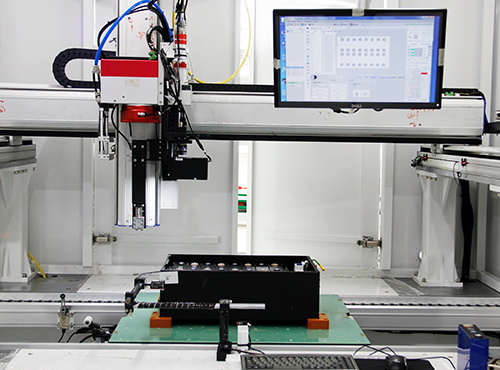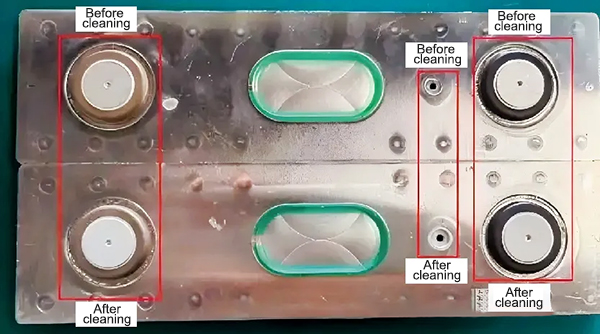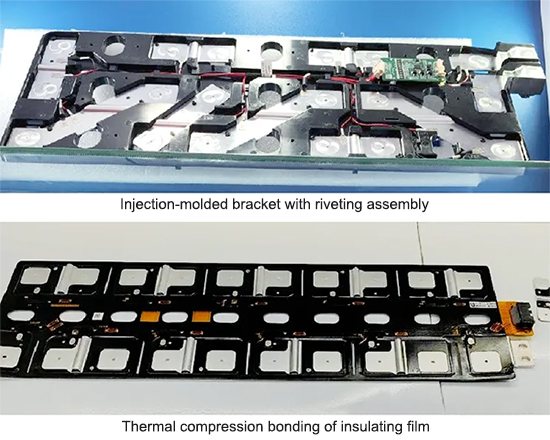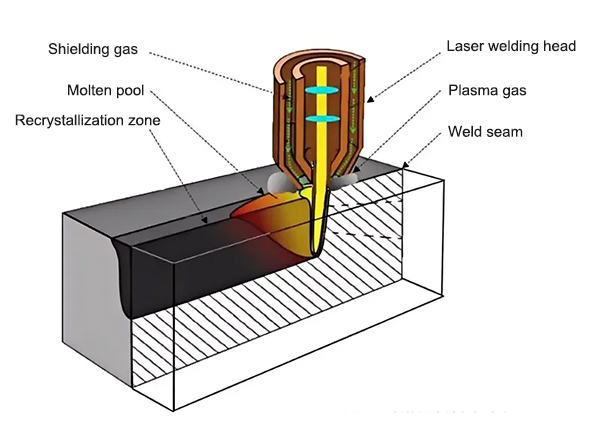Battery Pack Assembly Process Series 3 - Laser Welding
Automatic fiber laser welding machine is a highly efficient and precise welding equipment that uses a high-energy-density laser beam as a heat source. It irradiates the laser beam onto the surface of the material, causing the material to melt rapidly and form a weld, thereby achieving a firm connection between the materials.
Characteristics of laser welding: high energy density, fast welding speed, small heat-affected zone, small welding deformation, etc.
Scope of application: particularly suitable for application scenarios with high requirements for precision and quality.

Key Steps Of Laser Welding
1. Terminal Laser Cleaning
Operation purpose: Use laser beam to clean stains, rust, oxides, etc. on the surface of the pole to be welded, and improve the welding qualification rate
Process control points: power, speed, height, frequency, cleaning area, dust collection and treatment issues, etc.

2. CCS Installation
-
CCS: Cell Connection System, integrated busbar, refers to a component that integrates busbars, FPCs, sensors, etc. using injection molding frames, blister films, or hot pressing films
-
Busbar: has good conductivity and mechanical strength, and realizes high-voltage series/parallel connection of adjacent cells through laser welding
-
FPC: Flexible Printed Circuit, flexible printed circuit, transmits the voltage, temperature, current and other signals of the cell to BMS, realizing real-time monitoring and management of the battery status
-
Sensor: NTC patch sensor collects the temperature of the cell, and the voltage sensor monitors the cell voltage in real time
-
Plastic structural parts: mainly used to support and fix signal acquisition components and other components to ensure the stability and reliability of the entire system
The common processing technologies of CCS are: injection molding bracket + riveting process, blister isolation plate + hot riveting process. The main steps of its processing flow are: film cutting, film cleaning, pre-assembly, pressing, semi-finished product detection, welding, disassembly/insertion temperature sensing, finished product detection, etc.

CCS installation and positioning: CCS is generally positioned through tooling or positioning holes, and is initially fixed on the module to prevent displacement during welding.
3. CCD Positioning Before Welding
Before laser welding, CCD (charge coupled device) visual positioning technology plays a vital role. The high-definition image of the workpiece is collected by an industrial-grade high-resolution CCD camera, and the coordinates of the feature points are extracted in combination with the image processing algorithm, thereby guiding the precise positioning of the laser welding gun.
-
High-precision positioning: Through high-resolution cameras and image processing algorithms, micron-level precise positioning can be achieved to ensure that laser welding is carried out in the correct position, meet the needs of precision welding, and significantly improve the welding quality.
-
Automation and intelligence: The CCD system has real-time feedback and correction functions, which can automatically identify the offset of the workpiece and adjust the welding path, realize the integrated process of "positioning-welding-detection", reduce manual intervention, and improve production efficiency and automation level.
-
Strong adaptability and cost-effectiveness: CCD positioning adopts non-contact measurement to avoid damage to the workpiece, and can adapt to complex environments and workpieces of different materials. In addition, it reduces dependence on skilled workers, reduces scrap rate and equipment maintenance costs.
4. Laser Welding
Laser welding is one of the core processes in battery pack manufacturing. In this process, the laser beam is accurately irradiated to the welding part, causing the material to melt quickly and form a solid weld.
Advantages: It can achieve high-precision and high-efficiency welding, while having little thermal impact on the material, which helps to maintain the overall performance and safety of the battery pack.

Common welding defects: leaking welding, cold welding, explosion points, welding deviation, incomplete welding points, etc.

Welding slag cleaning:
During the laser welding process, there may be a lot of welding slag and other residues, which will have a serious negative impact on battery performance and potential safety hazards, such as increasing internal and reducing capacity, etc. In severe cases, it may cause short circuits and cause thermal runaway. Cleaning welding slag is a key link in the production process of battery packs. At present, negative pressure vacuum cleaners are mostly used to clean metal dust and splashing welding slag generated during the welding process.
5. EOL Testing
EOL (End of Line) testing is a key quality control link after laser welding. Through a series of detection methods, such as appearance inspection, non-destructive testing, etc., a comprehensive quality assessment of the battery pack after welding is carried out. EOL testing can promptly detect defects that may occur during welding, such as discontinuous welds, pores, cracks, etc., to ensure that the battery pack meets strict quality standards before leaving the factory.
Including: mechanism assembly, electrical safety performance, BMS communication, whether the logic of internal electrical components is normal, whether the voltage and temperature between batteries are normal, etc. Function: Ensure the normal function of the power battery system and avoid the flow of faulty products to the client.






